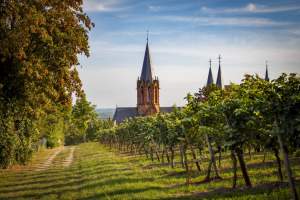Here is one of the basic tenets of wine: climate is what you expect and weather is what you get. In other words, here in South Florida we expect every year we will have a hot summer and cool to warm winter. We expect we’ll have rainy weather in the summer and relatively dry weather in the winter. That is our climate. In any given year we may have more rain in the summer than usual (like this year compared to 2017) or a cooler winter than usual (like 2017-2018) – that is the weather, and that is why wine vintages are different. Each year brings its own variances from the norm and that makes for perceptible difference in the grapes you harvest.
Of course, it’s not just about grapes – vintage variation can impact prices of everything from strawberries and bananas to whether we have one of those mango crops that has our neighbors begging us to take fruit off their hands. And when it comes to grapes it explains why some years your favorite wine is perhaps more expensive in the store, or a bit more intense in your glass – the vintage impacts the quality of the fruit and the price charged for it.

Vineyards in Rhinehessen (Photo: German Wine Institute)
What brings this to mind is a conversation I had with a friend who is a winemaker in Germany. Like winemakers everywhere, he has no doubt as to the reality of global warming – he sees it every year in his vineyards. The vineyard regions in Germany are in the southwestern part of the country but it is still considered a cool climate; pinot noir is the only significant red variety that can ripen in the area’s relatively short growing season. Riesling thrives there because it likes cool weather to preserve its crisp acidity, but it still needs enough days to ripen and produce the wonderful fruity flavors that balance the acidity. At cooler temperatures, ripening takes longer and that extra time trickles down through the supply chain – German producers are sometimes a month or more later than their French and Italian neighbors in getting their new wines into the market.
Imagine the sigh of relief, and no small amount of amazement, when the German wine industry announced earlier this week that the 2018 harvest will be the earliest harvest ever. The area called Rhinehessen, the largest of Germany’s wine areas, will start harvest grapes next week. Of course, an early harvest isn’t worth much if it doesn’t also have quality, but this year the weather has been very cooperative in both quality and quantity. The expectation is they will also be able to produce late harvest wines of great character because they can finish picking before any frost or freezes are likely to arrive.
It’s very possible we’ll start seeing bottles of 2018 Mosel and Rhine wines relatively early in 2019, and as a riesling lover, I’m looking forward to that, a little benefit in the midst of a lot of troubling news about global warming.
Cheers, or as my German friends say, “Prost!”
